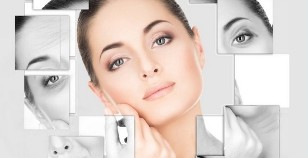A few years ago rejuvenation by laser was an elusive dream, which seemed like a magic procedure. Today to look younger than their years can everyone. Planning to carry out such a procedure, it is necessary to study the characteristics of the laser method of rejuvenation that will help you make the right decision.

Before you go to a specialist, you should know that there are two types of laser resurfacing, in particular:
- non-ablative laser treatment;
- ablative laser treatment.
Each of them is:
- full (complete);
- incomplete (fractional).
Both methods share one common feature – if the laser procedure is done correctly, the skin becomes fresh and "takes several years".
During this procedure, the skin is warmed up by the laser beam, and the laser affects the deeper layers of the skin, and the cells that produce fibers (fibroblasts). The laser makes cells carry out micro-circulation in certain skin layers more actively. To use this method in the presence of post-acne, scars, no significant sagging of the skin.
For rejuvenation erbium laser is used, which when exposed to the skin is not "touching" the top layer of the skin as the wavelength is 1550 nm. After the procedure the skin, which was carried out influence, becomes shining, smooth. If the skin is wrinkled, the face has uneven color, a pigmentation, stretch marks, acne, etc., then this method will help to quickly remedy the situation. A method of exposure based on the exposure to the laser beam, which due to long waves has no effect on the upper layers of the skin and stimulates the cells of the dermis.
The main difference between ablative method described above is that the laser exposure is performed on all layers of the skin, including the upper, and the procedure uses carbon dioxide laser (CO2). This method is recommended and is most often used to remove small facial wrinkles, wrinkles that form around the eyes, for getting rid of pigmentation, to improve skin tone. The procedure involves a powerful effect on the dermis that helps alignment of skin texture and has a pronounced lifting effect. The wavelength of the laser used in this method is 10600 nm.
The principle of the ablative method is the impact on the water in all the skin layers with a laser beam.
After the procedure, the rehabilitation period will be greater than if the conduct of non-ablative rejuvenation, which refers to the effects on the deeper layers of the skin. In both cases, the laser affects the water molecules that reside in the skin, and the liquid "retracts" from the dermis by way of evaporation, followed by synthesis of collagen and elastin, which are required for skin rejuvenation.
The intensity of exposure in each of the methods depends on the current skin condition and desired result. In addition, choosing a suitable method of laser resurfacing can be a doctor, which in this direction has appropriate qualification and vast experience.
Differences whole laser effects and fractional
In order to obtain complete rejuvenation, it is necessary to use a laser beam that affects the skin "whole stain". The method involves the continuous grinding of the epidermis, and so, gradually the damaged cells are replaced by new ones. Fractional impact gradually replaced the leather processing, solid (full) method, which is understandable. We are talking about the fact that after laser treatment the skin is restored for a long amount of time besides, the formation of scars on the surface of the skin.
Fractional exposure based on the principle of skin exposure zone, that is, the beam falls on the skin is not "solid spot", thereby forming a small network. This means that the impact on small patch of skin and not on the entire surface. In particular, the ray can cover an area about 20% of the entire face, but the rejuvenation affects all the face, despite the zonal division of radiation exposure.
Photorejuvenation laser
Photorejuvenation is an improved form of such effects, which are not affected by the upper layers of the epidermis. Thus, this technique has a lot of differences from the usual method. Photorejuvenation treats age spots, vascular pathologies, corrects the appearance of photodamage. This exposure rays are used, the length of which depends on the type of machine that is used in the procedure in particular.
So, when the radiation is "ignoring" of water, i.e. the beam does not interact with the liquid, but is good at absorbing the hemoglobin and melanin, which makes the photorejuvenation procedure as efficient as possible, especially when problems with blood vessels and pigmentation. Photorejuvenation provokes the start of the production of collagen, which tightens the skin, smoothes wrinkles, improves skin color and improves its tone.
After the procedure, the rehabilitation period is not required, and the procedure is performed without anesthesia. Unscrupulous "experts" do not tell the customers about the methods of laser resurfacing, thereby "forcing" to use available at this time. The result of this process can be not getting the expected or even a negative result, this means that, deciding to rejuvenate, you should only go to experienced doctors with high qualifications.





















